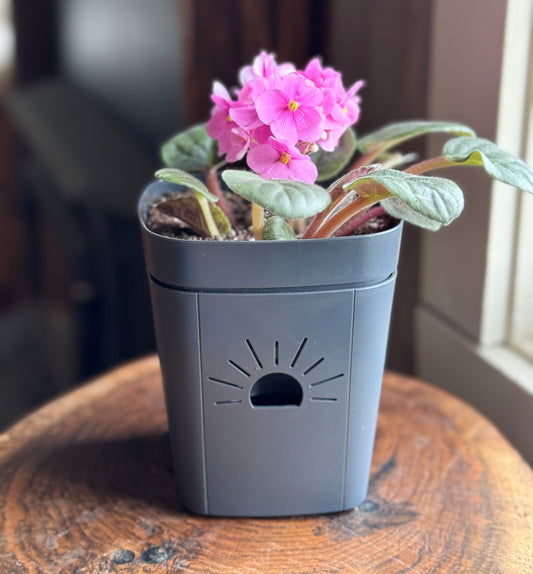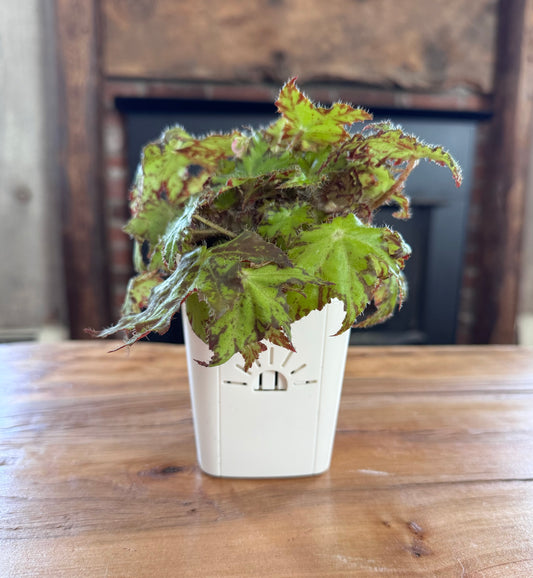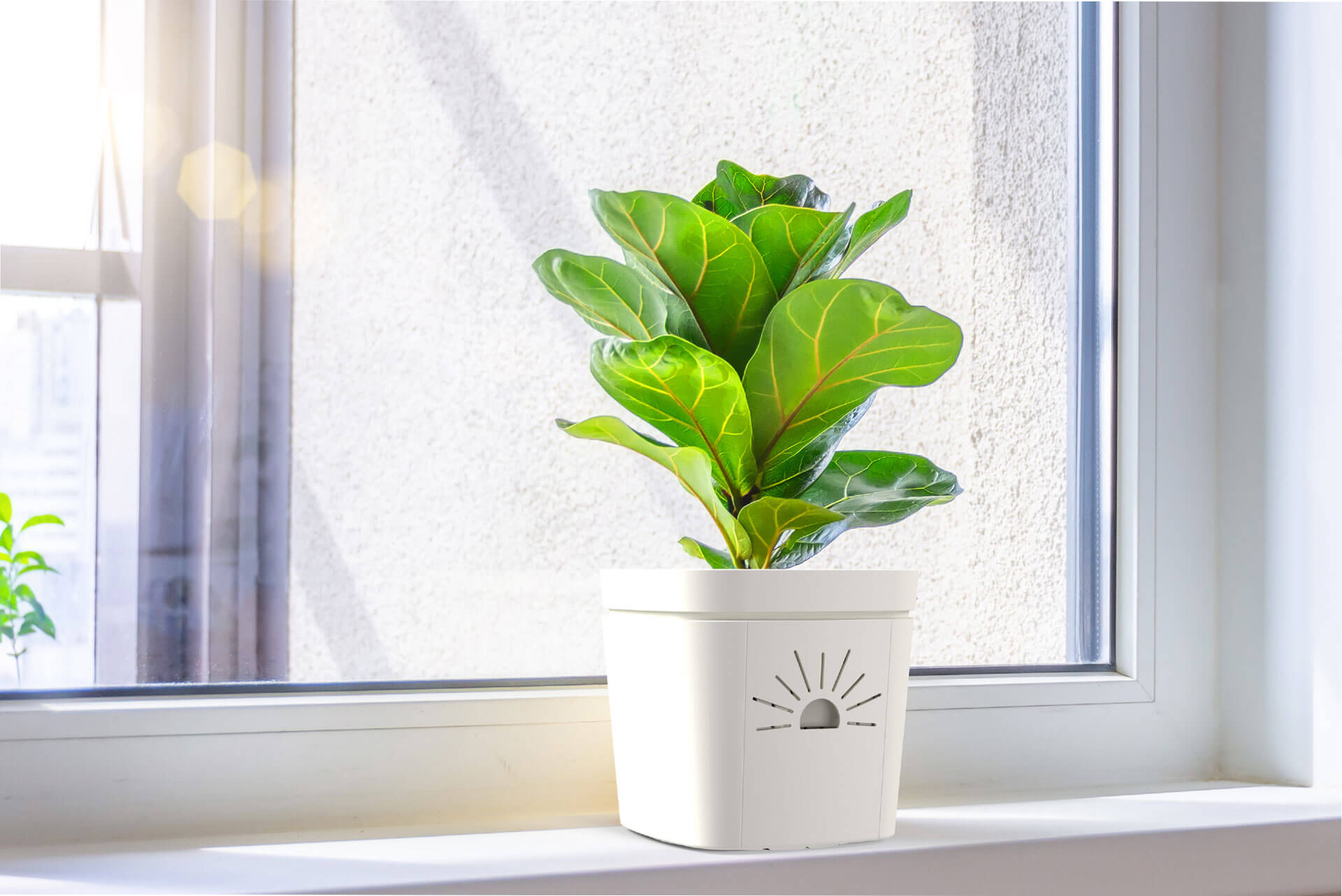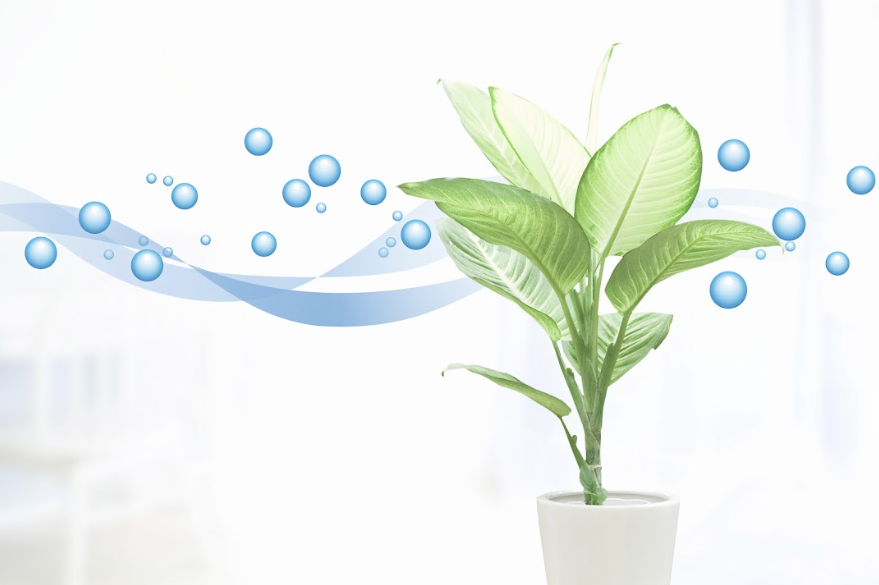Dracaena
Learn how to care for Dracaena.
Dracaena is a genus of popular house and garden plants consisting of 120 species. These plants are native to tropical and subtropical regions. Dracaenas typically have long stems with glossy leaves that come in a variety of shapes and sizes depending on the type.
The most common dracaena varieties used as houseplants include the Dracaena marginata (or dragon tree) and Dracaena fragrans (corn plant). They are popular houseplants due to their easy care requirements, which we will cover in detail.
There are two main types of Dracaena, those with treelike stems and branches and those with underground rhizomes and aboveground leaves. Recently Sansevieria and Pleomele have been added to the Dracaena genera. They are all members of the asparagus family.
Origins
Dracaenas are native to Africa and a few parts of southern Asia. This species has been known to humans for a long time and was named after the ancient Greek word for female dragon. Legend has it that this plant grew from the blood spilled in a legendary battle between an elephant and a giant fire-breathing lizard.
However, some claim that its name originated from Sir Francis Drake, who supposedly took some of these plants home during his 16th-century explorations. These dragon trees produce a red sap called Dragon’s Blood, which alchemists and natural medicine practitioners have used for thousands of years.
In the past, people used this red sap in the varnish of Italian violins from the 17th century. In Chinese herbal medicine, it is now used as an astringent to treat ulcers and help with blood clotting.
Furthermore, many people believe it brings luck if a Dracaena is present in one’s garden.
European botanists who visited Africa and Asia during the 1700s and 1800s quickly identified the similarities between dracaenas and masale plants, so they classified them all as Dracaenas. Dracaenas gained attention in horticultural reports, and by the 1800s, they had become a popular houseplant.
Light Requirements
Taking care of your Dracaena plant is relatively simple. It requires partial shade or indirect light in order to thrive, so the best place for it indoors would be near a north-facing window. East and west-facing windows can also provide adequate lighting but should not be placed too close to them as this could lead to leaf burn.
If you do find that the leaves have started to become discolored or faded, then this could indicate that your houseplant isn’t receiving enough light. Move it closer toward one of the aforementioned windowsills and monitor its progress over time – you should see an improvement soon!
Genus Summary
| GENUS | Dracaena |
| COMMON NAMES | Lucky bamboo, Corn plant, Dragon tree, Snake plant. |
| LIGHT | Medium to bright indirect |
| WATER SCHEDULE | 14-day schedule for Naked Root growers |
| WATER REQUIREMENTS | Keep the soil evenly moist but not soggy. |
| HUMIDITY | Average, medium humidity |
| TEMPERATURE | 65-80°F with a few 50° exceptions |
| FEEDING | 1x month |
| TOXICITY | Toxic to both humans and animals |
| PESTS | Spider mites, scale insects, and mealy bugs |
| DISEASES | Root rot, leaf spot, Botrytis, southern blight, powdery mildew |
| POT | Well draining with excellent oxygen flow |
| SOIL | Average, well-draining |
| FERTILIZER | Diluted infrequent feeding |
| PROPAGATION | Stem cuttings |
| PRUNING | Not required, but can be trained into fun shapes like a bonsai |
| SIZE | 6-inch miniatures to 50-foot trees outdoors. Average indoor size is 3-5 feet. |
Water Requirements
Dragon trees are not very demanding when it comes to water. They prefer a medium amount of water, so you won’t need to worry about giving them too much or too little. To determine if your plant needs water, wait until the soil is dry down to around 1/3 of the depth of the pot before watering. This will ensure that you give enough water to your plant but do not overfill it.
The leaves on your dragon tree can also give you an indication as to whether you are providing the right amount of water – if there are a lot of yellowing and falling off leaves, then this could be due to under-watering. If just the tips have started turning yellow, then this may be due to overwatering.
Dracaena plants require less frequent watering during the winter months when they enter dormancy. To ensure that your plant does not suffer from root rot due to excess moisture, make sure to provide good drainage and be careful not to overwater.
While these plants are drought tolerant and can withstand long periods without water, regular watering is still necessary for optimal health. Keep in mind that the amount of water needed will vary depending on factors such as temperature and light levels. So regularly check for signs of dehydration (e.g., wilting leaves) and adjust accordingly.
If you are using a Naked Root planter, you can simply follow a 14-day watering schedule.
Humidity
Dracaena plants are quite resilient but will benefit from a bit of extra care. They prefer medium humidity levels, which you’ll find in the average home.
Misting them is a great way to give your plant a little extra humidity in more arid climates. Not only will this help to keep your Dracaena happy and healthy, but it can also help prevent insect infestations – especially spider mites which tend to target these plants! To get the best results, aim for misting at least once or twice a week with soft water and make sure there’s no standing water on the leaves afterward.
Temperature
Dracaena does best with temperatures between 65ºF and 80ºF. If it gets too cold, the leaves can become frostbitten and will not recover.
There are a few exceptions to this. For example, Dracaena draco can tolerate temperatures as low as 50°F.
Toxicity
Dracaena plants are very popular houseplants, but they can be toxic for cats, dogs, and people. The saponins in the tree can cause severe health issues when ingested by pets or children. If you have a Dracaena plant in your home, it is best to keep it away from furry friends and little ones who might accidentally eat the foliage.
Signs of toxicity include vomiting, hyper-salivation, and dilated pupils. It is also essential to teach children not to touch or put any part of the plant in their mouths. Seek medical help if ingestion occurs as soon as possible.
Pests and Diseases
Spider mites, scale insects, and mealy bugs are all common pests that enjoy snacking on Dracaena plants. In addition, the common houseplant issues of root rot and leaf spot can be an issue in waterlogged soil.
Some varieties of Dracaena are sensitive to fluoride. With those, use distilled water if possible to avoid any fluoride toxicity. Symptoms of toxicity include dying tips of leaves, color distortion, and large brown patches on the leaves.
Botrytis and southern blight can cause water-spotted lesions on the leaves, while powdery mildew appears as a white powdery film on the top surface of the leaves. To avoid these diseases, provide your dragon tree with enough oxygen in the leaf and root zones, and do not water too often.
Pot
Choose a pot with adequate drainage and oxygen flow, so that root rot and other fungal infections do not affect your Dracaena. They like to be a little bit pot-bound, so do not pick a container that is more than 2 inches bigger than the root ball of the plant.
Soil
Dracaena plants prefer well-draining potting soil to help prevent their roots from becoming waterlogged. To ensure proper drainage, be sure to use a pot with drainage holes and set it on a saucer so that excess water can escape.
If you’re worried about the soil not draining quickly enough, try adding perlite or another lightweight material, such as vermiculite, to your potting mix. This amendment will help create air pockets in the soil allowing any excess moisture to evaporate more quickly and reducing the risk of root rot or other fungal diseases caused by overwatering.
Fertilizer
Dracaena plants are not heavy feeders and do not need a lot of fertilizer. However, if you would like to fertilize your Dracaena plant during the growing season, it is recommended to use a standard houseplant fertilizer once a month at 50% strength. The ideal NPK (nitrogen-phosphorous-potassium) ratio for this type of plant is 3-1-2 with added trace minerals.
Propagation
Once you have a Dracaena, it’s easy to propagate it yourself! Take a stem cutting from one mature plant, and trim off the lower leaves. Allow the cuttings to dry for an hour or so before planting. Water the soil you will use before planting your cutting, and then poke the cutting into the soil. After 1-2 weeks, you should start seeing new roots growing from your cuttings! Propagating them yourself means that instead of ordering more plants from wholesale nurseries every time, you can create clones of your existing plants instead!
Pruning
Pruning your Dracaena can give you a lot of control over how it looks. Nurseries often sell them pre-trained in twisted shapes, but they are also easy to train yourself! You can twist several stalks together or bend the plant into different shapes, such as spirals or hoops. Pruning this way is like having a small bonsai tree without the need for specialized pruning knowledge and tools. In addition to training your Dracaena, you should also remove any dead leaves that appear on the plant – this will help keep it healthy and looking its best!
10 Striking Varieties and Cultivars
Many new cultivars of Dracaena plants come out every year. Stripes and spots in yellow, green, purple, and pink are commonly found in nurseries throughout the country. This easy-to-grow houseplant can become addictive, as it’s easy to want to collect them all!
- Dracaena marginata ‘Colorama’ – Otherwise known as a dragon tree, this lovely plant has pink spikey leaves trimmed in green and white. It loves bright indirect light and can grow up to 6 feet tall indoors! It is also a very long-lived plant, so plan to write this one into your will.
- Dracaena fragrans ‘Compacta’ – This one is nicknamed the Janet Craig after a nurseryman’s daughter. It grows up to three feet tall indoors but is a very slow grower. It has shiny green foliage that grows in a dense rosette fashion, getting taller and taller over time.
- Dracaena fragrans ‘Lemon Lime’ – This Dracaena has bright yellow leaves that are sharp and sword-shaped. Each strappy leaf has a dark green stripe down the middle, and the green stripe itself is faintly striped in cream. This cultivar prefers bright filtered light and grows up to 10 feet tall (slowly) indoors.
- Dracaena sanderiana – Otherwise known as lucky bamboo and Chinese water bamboo, this water-loving Dracaena can grow its whole life in pure water without soil. It has slim, upright stems that are tubular in shape and have distinct nodes along their length. They do look very much like stalks of bamboo. It will grow up to 4 feet tall indoors with bright, indirect sunlight.
- Dracaena surculosa ‘Florida Beauty’ – This unique and eye-catching Dracaena has dainty stems and dark green leaves. Each leaf is dusted in yellow and cream spots as if someone shook fairy dust on them. This dracaena is a shade-loving plant in nature and does not do well in direct sunlight. If happy, it will produce tubular white flowers on tall stamens. This cultivar is hardy outdoors to 55°F.
- Dracaena draco – This Dracaena is nicknamed the red blood dragon tree because of its red sap. It grows with a central trunk and branches at the top, just like a tree. Atop each branch are dozens of blue-green spiky leaves, up to a foot long. Outdoors, it will grow to 15 feet tall, but indoors it usually remains half that size. It is hardy outside to 50°F.
- Dracaena fragrans ‘Lemon Surprise’ – Commonly known as the corn plant, this lovely Dracaena has waxy and shiny leaves that are over a foot long each. The leaves are lime green with a blue-green stripe down the middle. The leaves grow in a rosette pattern and can get up to 8 feet tall outdoors. Inside the house, it stays in the 4-5 feet range. It prefers filtered light. Too much light and the color will start to fade away.
- Dracaena braunii – This variety is multi-stemmed and looks very much like a shrub. It has light gray-green leaves that are trimmed and striped with white. In filtered light, it will happily produce white flowers indoors. It is not even lightly cold hardy, so protect from icy windows.
- Dracaena fragrans ‘Limelight’ – This Dracaena has pure lime green leaves without a steak or spot to mar their appearance. It is bright and glossy and grows in a rosette pattern, with each stem getting taller and taller, like a stalk of corn. It reaches 5 feet tall indoors and can spread to fill a 24-inch pot with ease.
- Dracaena Trifasciata – Common names for this plant are many, including snake plant and mother in laws tongue. It is a new member of the dracaena genus and requires the same amount of care. Medium to bright filtered light, infrequent watering, and light feeding. Erect, vertical leaves are thick and sturdy. The leaves are green with silver stripes and bright yellow edges.
Summary of Dracaena Plant Care
Dracaena plants are very easy to care for and thrive in average household conditions. They require average humidity and infrequent watering. They are not heavy feeders and are happy in the average household temperature of 65°F. They require no pruning unless you want to train one into a fun spiral shape, and they can live for up to 100 years!





 Verified Buyer
Verified Buyer









